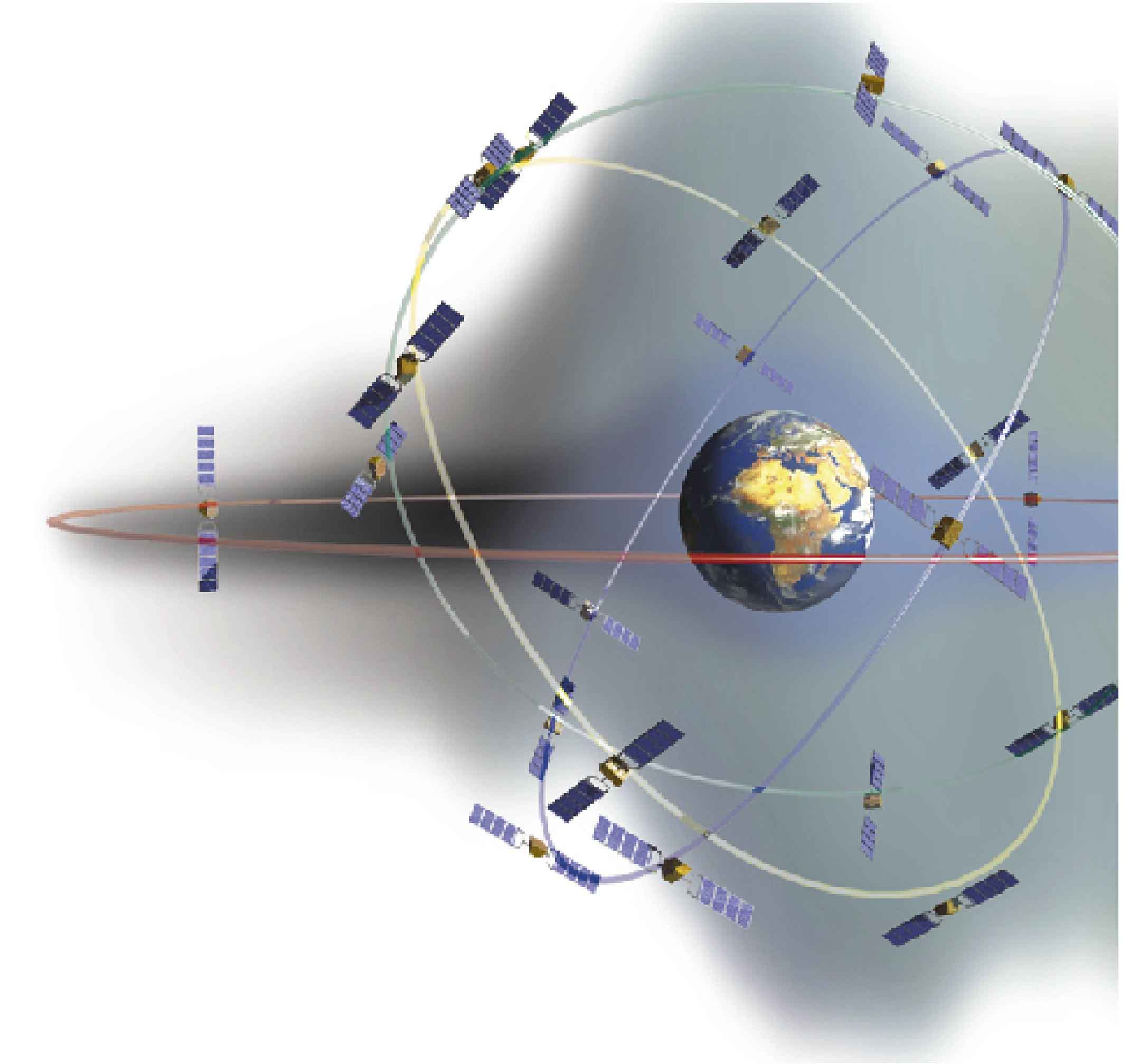Successful flights demonstrate R-EGI’s modular open systems architecture PNT capabilities.
DR. MIKEL MILLER, MATTHEW JONAS, DENNIS M. MILLER, DR. ROBERT LEISHMAN IS4S, MAJOR BERNARD MUTZ AFCMC
The Resilient-Embedded GPS/INS (R-EGI) program achieved a major milestone in advancing the resilient and robust positioning, navigation and timing (PNT) vision. The government-owned R-EGI open architecture, integrated into a modified line replaceable unit (LRU) designed for the F-16, successfully completed three comprehensive test flights in August and one test flight in October at Holloman Air Force Base in New Mexico. Flown on a specially outfitted C-12J aircraft, the R-EGI system successfully demonstrated the open architecture and showed exceptional functional performance, maintaining precise positioning and orientation throughout each flight.
“These successful test flights mark a significant advancement in PNT technology and validate the capabilities of the R-EGI system,” said Major Bernard Mutz, AFLCMC/WNX R-EGI program manager. “Our team’s hard work and dedication have led to this remarkable achievement, underscoring our commitment to enhancing navigation systems critical to modern military operations.”
In less than eight months, the R-EGI Rapid Prototype Flight Demonstration Team—comprised of personnel from Integrated Solutions for Systems (IS4S), Kearfott Corporation, General Dynamics-Mission Systems (GD-MS), Collins Aerospace, 746 Test Squadron (746 TS) and 586 Flight Test Squadron (586 FLTS)—successfully conducted flight evaluations on the 586 FLTS C-12J aircraft. These test flights mark a significant step forward in evaluating the R-EGI architecture for the core program, which is poised to enhance the accuracy and reliability of navigation systems critical for modern military operations. The success of these test flights highlights the system’s readiness to deliver cutting-edge capabilities to future warfighters.
“The integration of R-EGI architecture into the F-16 LRU has demonstrated impressive results, reflecting our commitment to pushing the boundaries of PNT technology,” said Dr. Mikel Miller, R-EGI program director at IS4S. “The data collected during these flights will be crucial for refining and optimizing the system to meet future operational demands.”


R-EGI Program: An Open Modular Approach to Robust PNT Solutions
The R-EGI program is being accomplished through a novel development process, using IS4S as the design agent, performing a best-of-breed development strategy involving many company partners. The program is developing production representative units for evaluation purposes, and more importantly, a Level-3 Technical Data Package (TDP) that the U.S. Air Force will own and make available to qualified vendors to produce these “build to print” systems.
The R-EGI is a Modular Open Systems Architecture (MOSA) designed to deliver robust and reliable PNT capabilities for U.S. Department of Defense (DOD) vehicles. R-EGI is inherently flexible, allowing it to adapt to various platforms while supporting future upgrades to stay ahead of emerging threats. Its layered open architecture, guided by a Model-Based Systems Engineering (MBSE) approach, ensures broad applicability of interfaces, accommodates changes in sensors and algorithms as adversary capabilities evolve, maintains the rigor necessary for reuse across platforms, and manages production variation effectively. To stay ahead of emerging threats, R-EGI provides on-ramp for complementary sources of PNT, such as cameras, magnetometers, radars and LiDARs.
Key features of the R-EGI system architecture and management capabilities include:
• Implementation of open VPX system management in compliance with VITA 46.11
• Complete and consistent separation of safety and non-safety data across programs.
• Line-replaceable unit (LRU) design and prototyping that supports multiple form factors and vehicle interfaces.
• Development of safety-critical software in accordance with RTCA/DO-178B/C and MIL-STD-882E safety standards.
• Development of mission-critical software across various programs, including weapon control systems, mission computers, missile guidance systems, communication networks, and ground-based PNT systems.
• Open-system software and application environments implemented in multiple programs.
The R-EGI program enhances PNT resilience by establishing a Government Reference Architecture (GRA), fostering industry and government engagement and design sources, and facilitating rapid integration of new hardware and software. This collaborative approach seeks to develop and evolve a robust PNT architecture, set standards, and deploy systems integration laboratories (SIL), while enabling timely and cost-effective capability insertion. Encouraging third-party software applications and complementary PNT hardware marks a significant paradigm shift in DOD PNT programs, ensuring sustained PNT superiority and a swift response to new threats.


Key Components of the Demonstration Units
The R-EGI demonstration was underpinned by a suite of critical components essential for validating the system’s functional performance in support of the R-EGI core program:
Large form factor (LFF) modified F-16 LRUs: These units under test produced by General Dynamics-Mission Systems (Figure 1), predecessors to the production representative prototype, contained the R-EGI architecture Safety Critical Navigation (SCNAV) subsystem from Kearfott Corp, an IMU from Kearfott Corp, a Mission Capability Navigation (MCNAV) subsystem from GD-MS/IS4S and a M-Code Global Navigation Satellite System Receiver (GNSSR) from Collins Aerospace. In addition, a Trimble Force 28M GPS M-Code receiver was quickly integrated into the LFF Demo Unit and performed exceptionally well during the fourth flight.
Figure 2 shows the R-EGI hardware subsystems.
Chassis: Includes the R-EGI mechanical enclosure, external connectors, power supply module, GPS maintenance battery, maintenance battery indicator (optional), transition board(s), mechanical hardware for mounting R-EGI subsystems, and routing of electrical signals between R-EGI subsystems via an open VPX backplane and internal cabling.
SCNAV subsystem: Responsible for the safety critical PNT solution, attitude outputs, primary host platform interfaces, and control of the GNSSR and IMU. The R-EGI architecture delineates safety critical processing and interfaces from other processing. This subsystem, in conjunction with the chassis, IMU and GNSSR, forms a classical EGI.
IMU subsystem: A high-performance IMU used to meet the navigation, guidance and control applications of the R-EGI System. The main function of the IMU is to measure, process and report specific forces/accelerations and angular rates using a combination of accelerometers and ring-laser gyroscopes under all operational conditions and vehicle maneuvers. The IMU subsystem provides this data to the SCNAV and MCNAV subsystems that then calculate attitude, angular rates, linear velocity, and position relative to a global reference frame.
GNSSR and Force 28M receiver subsystem: Responsible for providing a robust CA/Y/M Code GPS solution along with raw measurements for SCNAV and MCNAV processing. The GNSSR subsystem also hosts a Galileo Open Service mezzanine that provides additional GNSS measurements to the MCNAV subsystem.
MCNAV subsystem: Responsible for providing the “resilience” of R-EGI using modular and open software that can be rapidly updated to perform complementary PNT functionality with existing and new sensor measurements using a government-owned architecture, pntOS and ASPN23 messages. MCNAV does not perform any safety critical functions but enables mission fulfillment in challenging environments through the use of additional PNT sources. The MCNAV subsystem also provides/implements the R-EGI resilient and precise timing architecture and is responsible for maintenance related functions including Built-In Test (BIT), data recording, data transfers and reprogramming.
The following support systems were essential elements to support the flight test but are not part of the R-EGI LRU.
Ground test bench—flight systems: This infrastructure supported and controlled the system during both ground and airborne demonstrations.
On-Logic PC controllers: Managed the system’s operations and data collection.
Mission capable development systems (DS) with u-blox technology: This system provided complementary position, velocity and time (PVT) solutions and captured essential data for analysis.
Flight rack: Built by the 746 TS to house dual redundant systems, including LRUs, DS, system status displays, and data collection storage, meeting vibration and decompression requirements for the C-12J (Figure 3).

Preparation for C-12J Flight Demonstration
Prior to the C-12J flight demonstrations, the R-EGI demonstration units underwent extensive preparation. The system was rigorously tested through several phases, including lab testing and testing on IS4S and Kearfott vans (Figure 4) and the 746 TS large test vehicle (LTV). In addition, R-EGI DU flew on two commercial aircraft ride-share opportunities with Kearfott. This comprehensive infrastructure and thorough preparation were critical to the success of the demonstration and ensured our readiness for the C-12J demonstration flights. We also developed attitude and moving map displays providing real-time feedback for the engineers and flight test engineers to quickly assess functional performance.
Final pre-flight evaluations included:
746 TS vibration and rapid decompression testing: The R-EGI hardware, housed in the 746 TS flight rack, successfully underwent vibration testing to simulate operational conditions aboard the C-12J, assessing its resilience against mechanical stress (Figure 6). Rapid decompression tests evaluated the system’s response to sudden pressure changes, confirming its robustness in varied environments (Figure 7).
746 TS ground mobile sorties: Using the 746 TS LTV (Figure 8) at White Sands Missile Range (WSMR), the team achieved an impressive feat by collecting more than four hours of continuous PVT data each day. This extensive data collection verified the readiness and functional performance of the R-EGI Demonstration Units for integration into the C-12J.
“A small, agile team using rapid prototyping techniques, quickly matured R-EGI core functionality culminating in a successful flight demonstration,” said Matthew Jonas, IS4S chief engineer for the R-EGI Rapid Prototype Flight Demo. “The incremental lab, vehicle and commercial aircraft testing ensured issues were quickly uncovered and corrected; and substantiated the system’s readiness for the C-12J flight environment.”



Successful Demonstration Flights
The 746 TS flight test engineers developed diverse flight profiles testing the functional performance of the R-EGI architecture implementation under various conditions. During the August flights, the C-12J conducted two days of dynamic, high-intensity flight operations at WSMR, focusing on blended (M-Code/IMU) and M-Code solutions (Figure 9). One day featured a cross-country flight designed to assess inertial system performance. The fourth flight conducted in October demonstrated how R-EGI’s open architecture enabled integrating Trimble’s “off-the-shelf” Force 28M GPS receiver in less than four weeks.
WSMR profiles included standard taxiing, takeoff and climbs into designated airspace, followed by maneuvers such as level acceleration and deceleration, constant airspeed descents and climbs, and bank turns up to 60 degrees. “Rollercoaster maneuvers” simulated dynamic flight conditions to test the system’s performance under high-stress scenarios. The cross-country flight involved navigating between predetermined waypoints, investigating drift, and assessing navigation capabilities against expected outcomes to guide further refinement of the R-EGI core program (Figure 10).
“Our flight profiles were designed to rigorously test every aspect of the R-EGI system,” said Capt Gordon McCulloh, flight test engineer with the 746 TS. “The variety of maneuvers and conditions we employed provided invaluable insights into the system’s functional performance.”


Outcomes of the Demonstration
The aircraft demonstration successfully validated the R-EGI system’s integration and functionality in real-world conditions. The test flights confirmed the system’s capability to provide:
Blended M-Code GPS/IMU solutions: Demonstrated enhanced accuracy through integration of GPS and inertial measurement unit (IMU) data.
M-Code GPS-only solutions: Validated the system’s functional performance using solely M-Code GPS data.
IMU-only solutions: Tested the effectiveness of using IMU data alone.
MCNAV solutions: Confirmed MCNAV functional performance using government-owned plug-in architecture, pntOS and the ASPN23 common data structure for PNT systems.
Additionally, the demonstration evaluated mission-capable PVT solutions, aircraft attitude output, and integration with the aircraft environment, including bore-sighting accuracy. Flights over cross-country routes and within WSMR airspace provided valuable insights into the system’s reliability, accuracy and overall performance in various operational scenarios in support of R-EGI core development.
“The demonstration clearly showcased the R-EGI system’s robust capabilities and its potential to meet future operational needs,” said Lt Col Juan Ramirez, AFLCM/WNX AV, materiel leader, Navigation Warfare (NAVWAR) Branch. “The data collected will be instrumental in guiding the system’s development and ensuring it provides superior navigation and timing solutions.”

Training and Operational Readiness
The demonstration also served as a critical training platform for personnel (Figure 11). The test flights provided an opportunity for team members to gain hands-on experience with the system’s operations, monitoring and fault recovery procedures. This training is crucial for ensuring the technology can be effectively used and personnel are well-prepared for its deployment in future missions.
“Training on the R-EGI system has been an invaluable experience for our team,” said Lt Col Jonathon Gipson, 746 TS Commander. “It’s crucial that our team is well-prepared for any situation, and these flights have provided us with the practical skills needed to ensure the system’s successful deployment.”
Looking Ahead
The successful completion of the R-EGI architecture test flights represents a significant advancement in PNT technology. The insights gained from these demonstrations are set to play a key role in refining and enhancing the R-EGI system, paving the way for more open, resilient and capable navigation solutions. As the R-EGI design agent team continues its work, the contributions of the R-EGI system promises to greatly enhance the precision and effectiveness of military operations for years to come.
“The progress we’ve made with the R-EGI system underscores our dedication to advancing military technology,” concluded Colonel Jonathan Varoli, AFLCMC/WX, senior materiel leader, Combat Avionics. “We are excited about the future and the role this system will play in ensuring our forces remain at the cutting edge of precision navigation and timing.”
Upcoming Events
The R-EGI program has several scheduled events in 2025 that are set to advance navigation technology.
In the first quarter, the program plans to conduct a complementary PNT flight demonstration. This involves executing an off-the-shelf vision navigation algorithm in the R-EGI MCNAV solution during a GNSS-denied flight test.In the second quarter, R-EGI Functional Engineering Units will be produced for integration into aircraft SILs.
An advanced receiver and beam-steering antenna demonstration with R-EGI MCNAV will take place at NAVFEST25, hosted by the 746 TS at WSMR. This event will showcase advancements in navigation technology operating in GNSS-denied environments.
R-EGI Functional Equivalent Units (FEU), which provide a high-fidelity engineering model to support R-EGI integration into a virtual laboratory environment, will be available in the second quarter, and R-EGI production representative units (PRUs) will be available. Functional qualification testing (FQT) will be available in the fourth quarter.
Overall, 2025 features a series of events aimed at progressing the R-EGI program and its associated technologies.
Authors
Dr. Mikel Miller is currently the senior vice president for PNT with IS4S and the overall R-EGI program director. Formerly, he was the United States Air Force’s senior scientist for PNT and has more than 40 years of international experience educating, researching, developing, testing and producing PNT technologies for air, ground and autonomous systems.
Matthew Jonas has more than 38 years in the defense industry. He performed multiple roles including technology area director, program manager, capture manager, chief engineer, principal investigator, field service engineer, and systems engineer. He attained the engineering fellow position and received multiple technical contribution awards. Prior to leaving Raytheon, he was the R-EGI GNSSR module chief engineer (CE). He then joined IS4S and recently was the rapid prototype flight CE, leading a multi-company team accomplishing R-EGI’s first flight.
Dennis M. Miller brings more than 45 years of experience with the Department of Defense, including 25 years in the U.S. Air Force and 13 years as a government civilian. Throughout his career, he has held diverse roles in operational, acquisition and sustainment areas. Most recently, he worked with the Aerospace Corporation as the site lead for the Nuclear Operations Directorate. Currently, he supports various programs for IS4S and is program manager for Rapid Prototype Flight Demonstration.
Dr. Robert Leishman is the PNT area lead with IS4S and the mission capability navigation (MCNAV) IPT lead for the Resilient Embedded GPS and INS (R-EGI) program. Formerly, he was director of the Autonomy and Navigation Technology (ANT) Center at the Air Force Institute of Technology. There, Dr. Leishman led a team of researchers and students in developing cutting-edge, defense-focused autonomy and navigation technologies, primarily for sUAVs.
Major Bernard Mutz is currently the Resilient-EGI program manager with the Air Force Cycle Management Center Digital Directorate. He has 19 years of military experience in program management, maintenance and operational support.






